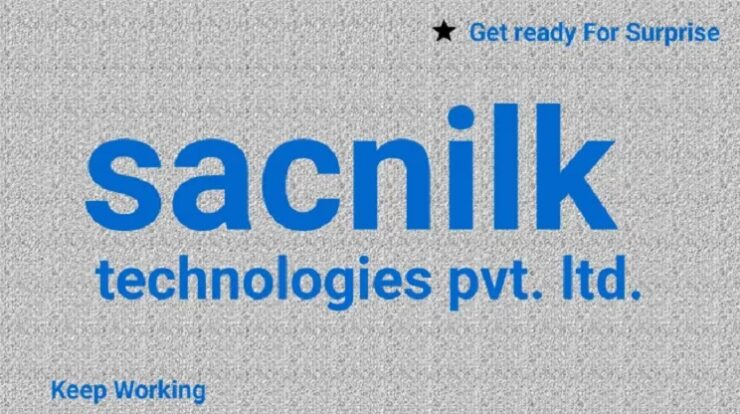
Today Agile methodology is used in many large companies in different fields over the world. Still, sometimes it’s essential to evaluate the working approach and look at it from a different angle to make the business more efficient and create in-demand products.
What is Agile methodology?
Agile is a methodology that helps teams respond quickly to project feedback. This allows you to evaluate possible directions and make changes to the project in the process of working on it due to the iterative approach. Agile helps companies create a highly competitive product and adapt to changes on the market.
In Agile methodology, the team is always above the processes, so when the client wants to implement Agile practices, we begin with creating Agile culture and then implement Jira and adapt it according to the Agile framework for a particular case to get the maximum profit.
Agile frameworks used separately or in combo, allow your team to:
- Boost collaboration. This means that everyone involved in the product development, including the customers, tends to work together and collaborate to improve the end product and user experience.
- Focus on CI/CD. Clients’ offerings have more chances to be implemented through continuous integration and deployment processes.
- Create a culture of mutual responsibility and self-government that makes micromanagement and lengthy approval procedures unnecessary.
- Use feedback to transform ideas into valuable products and use the experience of related teams in their work.
What Agile framework to choose?
Various Agile frameworks that help implement Agile values in a company, and the most popular are Kanban, Scrum, SAFe.
Kanban helps to track the progress of assigned tasks and distribute the workload among employees. This method allows you to effectively manage the work of the team and keep track of the deadlines for its completion. Visualization of all stages allows each employee to be aware of the progress of the processes. Kanban methodology has no hard and fast rules or restrictions.
In Scrum, a cross-functional team of specialists works on a project, as well as a product owner and a scrum master. The work is done by sprints, before the start of each sprint, tasks are formed, and at the end, the results are discussed. It’s simple and effective and has helped many software companies to achieve excellent results. Scrum allows you to avoid working in rush and missing deadlines.
But usually, when the project becomes too large, and there are already several teams involved in work, everything starts to fail, as Scrum’s capabilities become not enough. There’s another Agile framework that was created for scalable projects and allows implementing Agile into the whole corporation.
Scaled Agile
SAFe, a set of rules, guidelines and methods for implementing agile principles in large organizations with a large portfolio of products, helps to solve the problem and rebuild Agile work.
Around 30% of companies choose the Scaled Agile Framework (SAFe). The SAFe framework contains the best and proven principles, practices and competencies for implementing Lean, Agile and DevOps in any organization.
SAFe breaks down any business into three levels:
- portfolio level;
- product level
- team level.
At the portfolio level, the concept of “business epic” is central here, which reflects the most priority areas of product development soon.
At the product level, epics are broken down into features, i.e. the parts of functionality that implement the given epic.
At the team level, even more, task decomposition is required. Each feature should be broken down into several clear and well-articulated user stories that can be evaluated and implemented throughout the sprint.
As you descend from portfolio level to team level, tasks decrease and their boundaries become refined.
Implementing Scaled Agile Framework
At Polontech, we have been implementing Agile frameworks using Atlassian products and custom development for over 10 years. We work with both large companies and startups. When it comes to the implementation of SAFe in a company, we stick to the following plan:
- Portfolio management. We analyze value streams to scale Agile to those processes that bring profit.
- Agile support. We align SAFe goals with the requirements, budgets, management and policies of other departments.
- Agile Release Trains. We assemble the SAFe team to implement Agile at all levels of the company and coordinate their actions with the portfolio and budgets.
- Teams. We provide a unified vision and work plan for multiple self-managed cross-functional Agile teams.
- Implementation. We think over the implementation of SAFe, create a deployment plan, strategy and metrics for each stage.
- Scaling. We implement Jira Structure, Align, Big Picture to manage projects at the portfolio level, create individual hierarchies and assess implementation progress.
- We scale Agile to all levels of the organization and provide the ability to manage large projects and multiple self-organized teams.
SAFe Automation with Jira
SAFe is effective but pretty massive. To make it easier for work, we recommend our clients using special automation tools. Most SAFe automation software is based on the Scrum framework, and you can also use the built-in tools of universal automation and project management platforms. There are plenty of tools similar by functionality, interface, and performance.
To implement SAFe practices without freezing the working activities through the whole organization, we often use the combo of Atlassian products, and recommend mostly Jira Align for SAFe.
Jira Align is one of the most popular and versatile tools for automating Agile processes and project management. It allows your team to work with any of Agile methodologies, including SAFe. The software has a simple interface that makes it easy to understand and use the service.
Implementing Scaled Agile practices using Jira is perfect for large organizations running several projects at once in a highly integrated environment, the service is flexibly configurable to control work and allows you to track development at every stage by each specialist.
This product is the best match for implementing SAFe practices into the organization, as it comes with full SAFe 5.0 support, including main configurations (Essential SAFe, Portfolio SAFe, Large Solution SAFe, and Full SAFe). It has additional features for the adoption of Scaled Agile:
- SAFe 5.0 support;
- Continuous improvement to inspect a periodic progress review;
- SAFe checklists with workflow templates for users;
- Scope, resources, budget and time planning;
- Integration with other Jira instances, as well as Trello, Confluence, ServiceNow, Slack and other tools.
Conclusion
One of the biggest pitfalls is thinking of Agile as a panacea that can help you get more work done in less time. Agile is about breaking down the rigid structures that keep people from doing their best. It’s essential to review the project management models in the company and apply Agile frameworks that your teams need now, and the easiest way to do so is with the help of project management software. Implementing Scaled Agile allows your business to work on large-scale projects with even larger self-organized teams.




